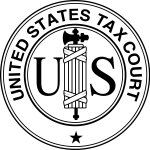 In Rothman v. Commissioner, T.C. Memo. 2012-163, the Tax Court held that petitioners failed to provide a qualified appraisal under IRC § 70(f)(11) for the donation of a facade easement on their residence in Brooklyn, New York. The Court followed its decision in Scheidelman v. Commissioner, T.C. Memo. 2010-151, finding that “applying a fixed percentage to the before value of the subject property, without explanation, does not constitute a valuation method under IRC § 1.170A-13(c)(3).”
In Rothman v. Commissioner, T.C. Memo. 2012-163, the Tax Court held that petitioners failed to provide a qualified appraisal under IRC § 70(f)(11) for the donation of a facade easement on their residence in Brooklyn, New York. The Court followed its decision in Scheidelman v. Commissioner, T.C. Memo. 2010-151, finding that “applying a fixed percentage to the before value of the subject property, without explanation, does not constitute a valuation method under IRC § 1.170A-13(c)(3).”
The case came to the Court on petitioners’ motion for partial summary judgment and respondent’s motion for partial summary judgment on the issue of whether petitioners obtained a qualified appraisal in connection with their charitable deduction for the donation of a facade easement in 2004. The petitioners donated an open space and architectural facade easement to the National Architectural Trust (NAT) on their home in Brooklyn, New York. The petitioners hired a New York real estate appraisal firm to appraise the property and the easement.
The appraiser used the before and after method to determine the easement’s fair market value. He estimated the value of the property before the easement to be $2.6 million by comparing five sales of similar properties in the area. Similar to Scheidelman, the appraiser was unable to identify sales of comparable eased properties to determine the after value of the property, so he cited historical precedence to reduce the subject property’s before value by 11.15%. Thus, the appraisal valued the petitioners’ facade easement at $290,000. The petitioners claimed a noncash charitable deduction of $247,010 on their 2004 Federal income tax return and an excess charitable contribution carryover of $42,990 on their 2005 Federal income tax return.
The Court noted that the appraisal presented by petitioners was “identical in all material respects, including the typographical errors, to the one petitioners obtained.” Citing Scheidelman, the Court rejected the appraiser’s argument that applying a percentage to a property’s before provided a method or specific basis for determining a property’s after value. The Court also questioned the appraiser’s interpretation and reliance on the decision in Hillborn v. Commissioner, 85 T.C. 677, to grant a general 10% rule for facade easement donations. Instead, the Court held that the easement’s terms and covenants must be analyzed individually and collectively and compared to existing zoning restrictions to estimate the extent to which the easement affects the property’s fair market value. The Court found that the appraisal language, identical to Scheidelman, failed to explain how the specific attributes of the property led to the value determined in the appraisal.
The Court held that the appraisal was not a qualified appraisal because it failed to include a valuation method or specific basis for the value of the easement determined as required under Treas. Reg. §§ 1.170A-13(c)(3)(J) and (K).
Read the Tax Court Opinion here: Rothman v. Commissioner, T.C. Memo. 2012-16

